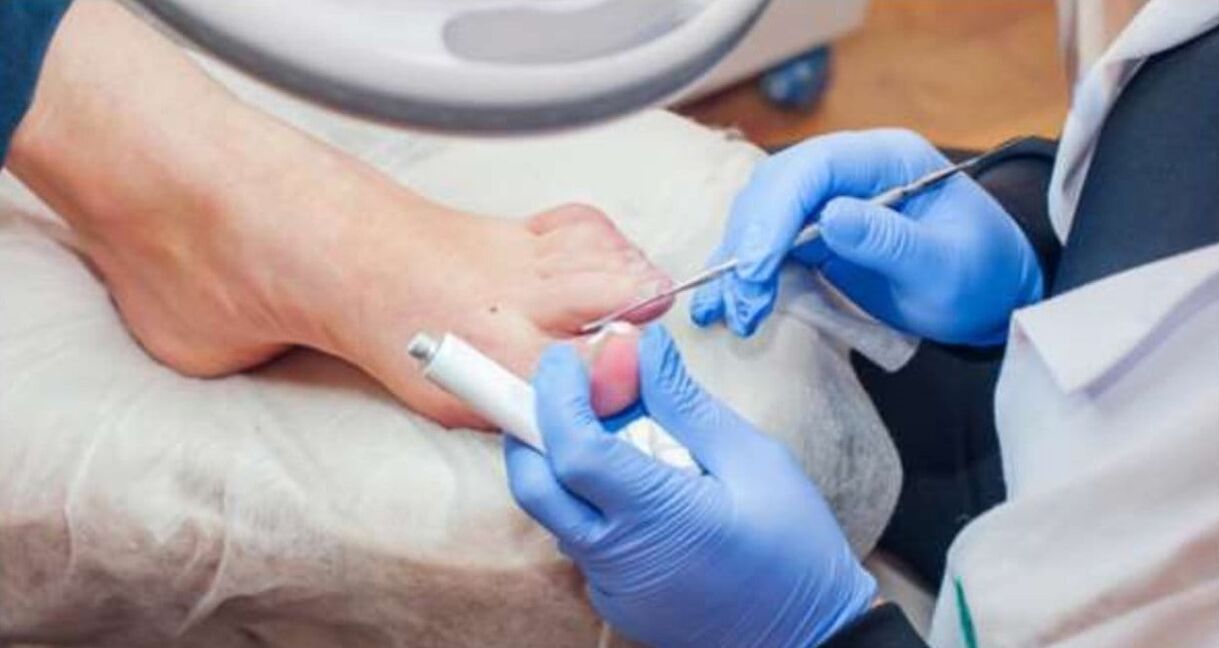Fungal diseases of the nails and feet are common.

root cause
Doctors divide fungal diseases of the feet and nails into two groups. The first includes diseases called epidermophytosis, which are caused by the fungus Trichophyton interdigitale, the second - rubrophytosis, which occurs when the fungus Trichophyton rubrum multiplies. These fungi can attack the nail plates as well as the interdigital folds, the soles of the feet and the dorsum of the feet.
Factors Contributing to Fungal Infection:
- Cracks, abrasion in the interdigital folds from sweating or dry skin, abrasion, poor drying after water procedures, narrow interdigital spaces, flat feet, wearing tight shoes, etc. ;
- Vascular diseases, extremity frostbite, standing work, varicose veins, decreased immunity, endocrine diseases, stress;
- professional factors - work in mining companies, in the metallurgical and chemical industries. Fungal nail and athlete's foot often affect military personnel and athletes, which is also due to the specifics of their profession.
The disease can be transmitted through close contact with the patient or through the objects they use. Baths, swimming pools and other public places with high humidity are "dangerous" from the point of view of contamination. They are ideal "greenhouse" conditions for the fungus: warmth and moisture. In addition, the nail plate, which consists almost exclusively of keratin, isan excellent breeding ground for mushrooms.
The fungus grows in the nail plate and multiplies very slowly. Gradually, it dissolves the nail, takes its place and spreads on the skin.
What's happening?
With a fungal infection of the skin of the feet, the process often begins with interdigital wrinkles. Cracks and peelings form in these places. Later, the skin begins to redden and itchy occurs. The process often goes to the top of the foot, the sole, and the plantar portion of the toes. Other clinical forms of fungal infection are also possible.
Nail fungus manifests itself as follows:
- Nail color: white, yellow, brown, black. The nail is dull and opaque.
- Nail surface: uneven, rough. The nail is crumbling.
- Thickness of the nail: thickening or thinning / delamination.
- Nail shape: deformed.
- The nail fold: not changed or inflamed.
Significant deformation of the nails and their thickening leads to certain difficulties in cutting. In addition, the pressure of a thick, misshapen nail on the underlying tissue (nail bed) and the pressure of the shoe on the nail can in many cases cause pain.
Diagnosis and treatment
Diagnosis and treatment of fungal diseases is carried out by a dermatologist. The doctor will first send you to scrape - to determine the type of fungus and prescribe the necessary treatment. In addition, certain drugs are prescribed depending on the general condition of the patient, the presence or absence of other diseases. Self-medication is therefore ineffective and can sometimes even worsen the course of the disease.
The main danger of a fungal infection of the feet is that the disease is constantly progressing. If left untreated, the fungus spreads from one nail to another, and then to nearby areas of skin or fingernail. In rare cases, even internal organs are damaged.
In addition, the causative agents of this disease, which are very strong allergens, can restore the body's sensitivity, thereby provoking various types of allergic reactions.
Many patients prefer the widely used antifungal drugs and ointments. It should be noted that antifungal drugs help only in the first stages of the disease, and do not affect the entire thickness of the nail - in many cases it is necessary to take drugs (tablets) inside. In addition, some of the creams only work on the skin without penetrating the nail. These funds are mainly used for prevention.
Sometimes people do not see the doctor because they are afraid of completely removing the nail plate. This is not the case as the deletion method is no longer used. Powerful antifungal drugs are currently in use, and when used correctly, they will completely eliminate the fungus.
When treating a fungal infection and after it has cleared, it is important to disinfect anything that the fungus has come into contact with. Disinfection should be applied to floors, walls, inventory of baths, showers, bathrooms, as well as the patient's personal items: linen, shoes, skin and nail care items.
You can reduce the risk of infection with a fungus by following the recommendations below:
- use a custom towel;
- wear custom indoor shoes;
- shower after the pool;
- Do not wear slippers when visiting.
- Do not try on barefoot shoes in the store.


























